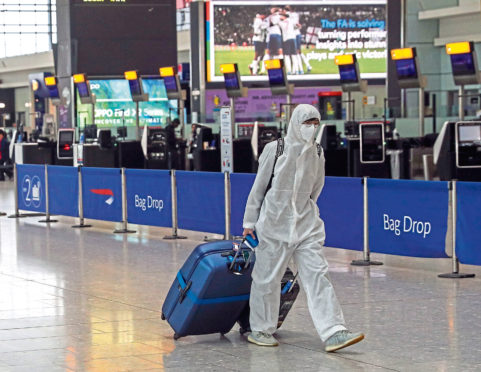Daily passenger numbers at Europe’s airports plunged from 5.12 million at the start of March to 174,000 at the month’s end.
Restrictions to travel and lockdowns imposed by governments, as well as airlines grounding most of their fleet, have resulted in business “falling off a cliff”, ACI Europe said yesterday.
More than 100m customers were “lost” to terminals across the continent last month, the airports trade body added.
Passenger numbers fell by 59.5% in March, compared with a year ago, dragging the first quarter total down by 21%.
The airports were busy at the start of the month, with 5.12m people flying in and out on March 1 – an 11.7% year-on-year drop. But the last day of March saw 174,000 travellers using the terminals, a 97.1% fall on a year ago.
ACI Europe director Olivier Jankovec said: “This is like nothing we have seen before.
“In the global financial crisis, it took Europe’s airports 12 months in 2009 to lose 100m passengers.
“With Covid-19, it just took 31 days – the month of March – for that same passenger volume and more to vanish.”
While 93 European airports have shut, mostly secondary and smaller regional terminals, more than 80% of Europe’s airports remain open to commercial air traffic.
ACI Europe has further revised downwards its projections for the impact of Covid-19 on the regions’ airport operators, taking into account not only the weak numbers for March but also the likelihood of prolonged lockdowns and restrictions to air travel.
It is now predicting a loss of 873m passengers for Europe’s airports in 2020, representing a decrease of 35% in a year that was previously forecast to see 2.3% passenger growth.
In financial terms, Covid-19 is expected to cost European airport operators nearly £20 billion this year – a decrease of 41% from previous forecasts for a “business as usual scenario”.
ACI Europe has called for a “fully co-ordinated” aviation relief plan for “all actors in the air transport ecosystem”.
Mr Jankovec said: “Airports are local jobs machines.
“They very often are the largest employment site in their communities, regions or even at national level.
“This means restoring air connectivity must be at the forefront of the EU’s exit and recovery strategy.”
